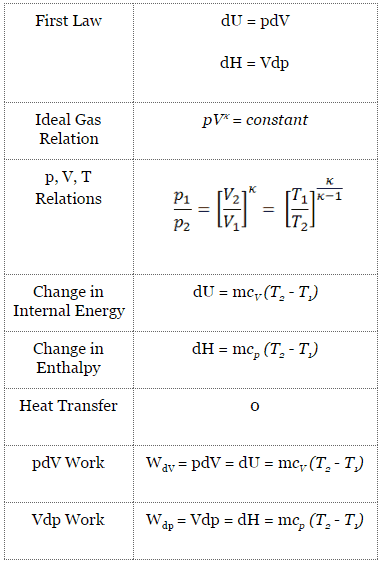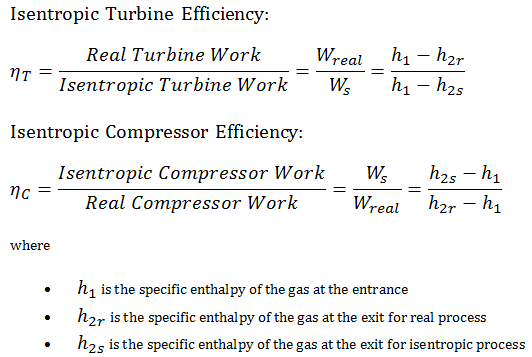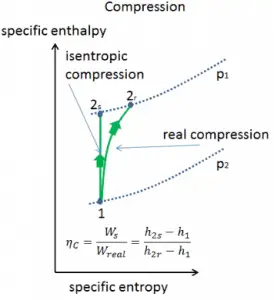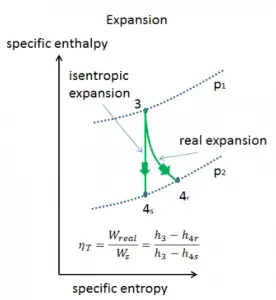Compared to the isentropic process in which the entropy of the fluid or gas remains constant, the entropy changes, in the adiabatic process. Therefore the adiabatic process is considered to be an irreversible process. The isentropic process is a special case of an adiabatic process. The isentropic process is a reversible adiabatic process. An isentropic process can also be called a constant entropy process. In engineering, such an idealized process is very useful for comparison with real processes.
One way to make real processes approximate reversible processes is to carry out the process in a series of small or infinitesimal steps or infinitely slowly so that the process can be considered a series of equilibrium states. For example, heat transfer may be considered reversible due to a small temperature difference between the system and its surroundings. But real processes are not done infinitely slowly. Reversible processes are a useful and convenient theoretical fiction but do not occur in nature. For example, there could be turbulence in the gas. Therefore, heat engines must have lower efficiencies than limits on their efficiency due to the inherent irreversibility of the heat engine cycle they use.

See also: First Law of Thermodynamics
See also: Ideal Gas Law
See also: What is Enthalpy
Isentropic Efficiency – Turbine, Compressor, Nozzle
In previous chapters, we assumed that the gas expansion is isentropic, and therefore we used T4,is as the gas’s outlet temperature. These assumptions are only applicable with ideal cycles.
Most steady-flow devices (turbines, compressors, nozzles) operate under adiabatic conditions, but they are not truly isentropic but are rather idealized as isentropic for calculation purposes. We define parameters ηT, ηC, ηN as a ratio of real work done by a device to work by a device when operated under isentropic conditions (in the case of the turbine). This ratio is known as the Isentropic Turbine/Compressor/Nozzle Efficiency.
These parameters describe how efficiently a turbine, compressor, or nozzle approximates a corresponding isentropic device. This parameter reduces the overall efficiency and work output. For turbines, the value of ηT is typically 0.7 to 0.9 (70–90%).


